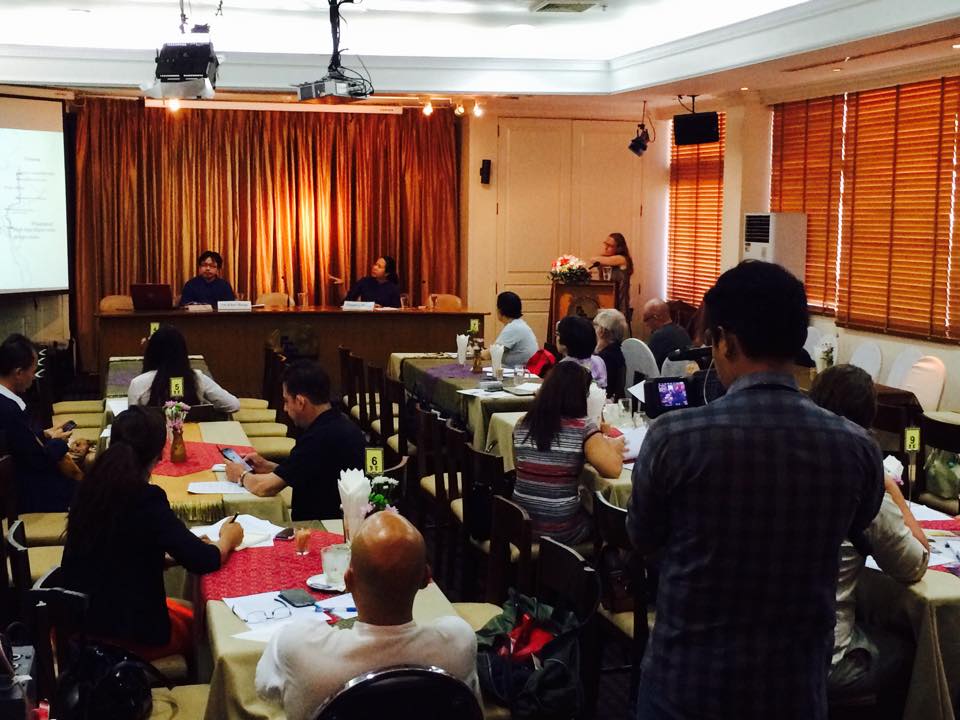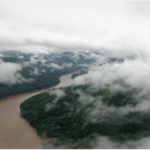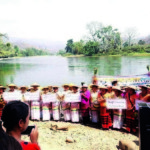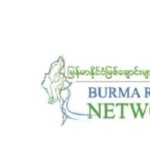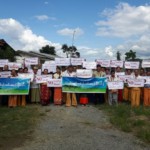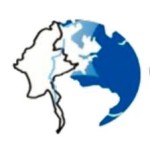Statement by Shan Community Based Organizations | June 9, 2015
In the past few months, plans have been accelerated to build the Upper Salween (Mong Ton) dam in southern Shan State, which is a joint project between China’s Three Gorges Corporation, the Electricity Generating Authority of Thailand, and Myanmar’s Ministry of Electric Power and International Group of Entrepreneurs.
The giant 241 meter high dam will produce 7000 MW of power, 90% of which will be exported to Thailand and China. Its reservoir will stretch two thirds the length of Shan State, flooding the historic Keng Kham valley, whose unique ecology of a “thousand islands” in the Nam Pang tributary give Kunhing township its name (“Kun Heng” means a thousand islands in Shan).
Over 60 Chinese engineers have been staying at the dam site since early 2015, conducting hydrological and geological tests, drilling deep tunnels in the Salween river banks. The site is closely guarded by Burmese military and police, and a 20-mile stretch of the Salween waterway around the site is now strictly out of bounds to all but company personnel.
Australia’s Snowy Mountains Engineering Corporation (SMEC) is carrying out the EIA/SIA for the dam, and its teams have been travelling around Shan State since March 2015
Shan CBOs have long opposed the damming of our treasured Salween River, and have grave concerns about the latest developments, as follows:
- Conflict is continuing in Shan State, particularly in the north, where Burma’s heaviest fighting in decades is taking place between Burmese government troops and Kokang forces. This fighting has already halted the construction of the Kunlong dam, planned to be the first built on the Salween.
The Mong Ton dam site lies in an area contested by several of the largest ethnic armed groups in Shan State. The areas around the dam site and its planned reservoir are heavily militarized, by both government and ethnic armed forces. The number of Burma Army battalions stationed around the dam site has increased fourfold to 39 over the past 20 years. Despite ceasefires, there have been ongoing armed clashes, and as recently as June 4 2015 the United Wa State Army clashed with government troops in Mong Ton. The potential flood area has been largely depopulated since a massive anti-insurgency campaign in 1996-98, which uprooted over 300,000 villagers in central Shan State. The remaining rural communities continue to suffer from abuses committed with impunity by government troops.
If the government proceeds with building the Mong Ton dam under the current conditions, it is sure they will send in even greater numbers of troops and increase military fortifications to secure the area. This will fuel the conflict, and lead to increased abuses against local communities.
Conflict will also be inflamed by the fact that Naypyidaw is proceeding with selling off the Salween River to neighbouring countries, instead of waiting till there is a negotiated federal settlement under the peace process, which would give the ethnic peoples decision-making power to protect the natural resources, including waterways, in their areas.
- It is becoming apparent that SMEC’s EIA/SIA process is simply a sham, aimed to rubber-stamp the Mong Ton dam plans, rather than objectively assess the project’s actual impacts. Despite promising to hold “comprehensive” public consultations in impacted townships, SMEC has since last month cancelled all public consultations at the township level, instead only holding closed-door meetings with government officials, for example in Loilem and Tachilek. This appears to be a deliberate strategy to avoid facing community protests against the dam. Large community protests took place during SMEC’s public consultation in Mong Ton on April 6, 2015, and before SMEC’s planned public consultation in Kunhing on April 30, 2015.
Only a week after beginning EIA/SIA field surveys in Mong Ton in mid-May 2015, the SMEC survey team was forced to cut short its work and leave Mong Ton due to strong resistance from local community leaders. The SMEC field surveyors had angered local villagers by only explaining the positive impacts of the dam, giving them “gifts” which they saw as bribes, and persuading them to sign documents they didn’t understand.
Shan CBOs therefore urge an immediate halt to the current plan by Naypyidaw to build the Mong Ton dam, as well as all other plans to build dams on the Salween River. SMEC should immediately end its EIA/SIA, and all company personnel and equipment should be withdrawn from the Mong Ton dam site.
Endorsed by:
Shan CBOs
- Shan Sapawa Environmental Organization
- Shan Human Rights Foundation
- Shan Youth Power
- Shan Farmers’ Network
- Shan University Students (Thailand)
- Shan Women’s Action Network
- Shan State Development Foundation
- Shan State Organization
- Shan Youth Organization
- Shan Youth Network Group
- Kun Heng Foundation
- Mong Ton-Na Kawng Moo- Pong Pa Kham River Protection Group
- Mong Pan River Protection Group
- Toom Toan Tai
- Worker Solidarity Association
- Shan Refugee Committee
PDF ENGLISH| SHAN| BURMESE| THAI
Contact Persons:
Sai Khur Hseng +66 81 672 2031 English, Shan, Thai, Burmese
Nang Kham Nong +95 94 283 67849 Shan
Nang Hseng Hom +95 92 50 486 512 Shan, Burmese
This statement is also available on Shan Human Rights Foundation’s website.

